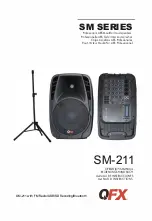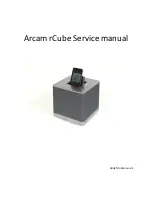
IMPORTANT
This speaker complied with SAE J1849 EVS3 and
CCR Title 13 Class A requirements when used
with Federal Signal Corporation electronic sirens.
A.
UNPACKING.
After unpacking the kit, carefully check all envelopes,
shipping labels, and tags before removing or destroying
them. Ensure that the parts listed in the KIT CONTENTS
LIST are contained in the packing carton.
B.
KIT CONTENTS LIST.
Qty.
Description
Part Number
2
Screw, 5/16-18 x 3/4"
7002A005-12
2
Lockwasher, 5/16"
7074A020
1
Speaker Assembly
MS100
C.
INSTALLATION.
WARNING
To avoid reduction of sound output and damage to
speaker, ensure that speaker is mounted with
wires protruding from the right side of the speaker
when viewing it from the front.
CAUTION
Before drilling holes in ANY part of a vehicle, be
sure that both sides of the mounting surface are
clear of parts that could be damaged; such as brake
lines, fuel lines, electrical wiring or other vital
parts. Note that the two rear bracket hole locations
MUST be protected during the drilling operation.
a.
Select an appropriate mounting location which
provides both adequate support and sufficient clearance for
the speaker assembly. In addition, the mounting location
should provide maximum signaling effectiveness while
minimizing the sound reaching the vehicle’s occupants.
290A3680
MS100
SPEAKER
WIRES
5/16"
LOCKWASHERS (2)
5/16-18 x 3/4"
HEX HEAD CAP
SCREWS (2)
Figure 1.
-2-
WARNING
To avoid reduction of sound output, ensure that the
speaker is mounted with the sound opening facing
directly in the direction intended to warn.
NOTE
Because of the variety of vehicles and possible
mounting arrangements, installation details and
mounting bracket fabrication must be determined
by the installer.
b.
See figure 1. After speaker mounting is
completed, connect the two leads from the speaker to the
electronic siren’s speaker cable. Refer to the instruction
sheet packed with the electronic siren for additional
details.
WARNING
All effective sirens produce loud sounds which may
cause, in certain situations, permanent hearing
loss. You should take appropriate precautions such
as wearing hearing protection.
c.
Test the system for proper operation.






















